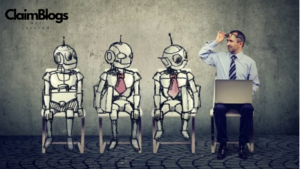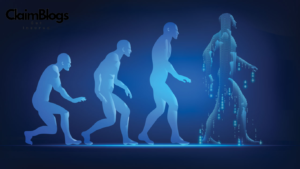AI for Human Learning and Behavior Change
Introduction
A quiet master, Artificial Intelligence (AI) changes the complex rhythms of our lives like the music of a constantly changing symphony. People’s ability to learn and change their behaviour is one of its most important effects. As AI technologies smoothly twirl through evolution, they stop being simple tools and start becoming mysterious triggers that create experiences that are an integral part of how we think.
This piece starts a mysterious journey through the dark hallways of how AI quietly changes our daily lives, improves our learning abilities, shapes our behaviour, and the how its pros and cons interact in mysterious ways. Then, we’ll talk about AI’s unimaginable future goals and show how it will change human life in the areas of learning and behaviour.
What AI is doing to alter our lives
AI weaves through the hidden rhythms of our daily lives like a ghostly conductor in the grand music of existence. Within our phantom existence, AI is everywhere, from the words of virtual helpers making chores easier to the shapes our social media posts. Its spectral ability to handle huge datasets and distil complex insights has created innovative specters in education, healthcare, and finance.
Within the ethereal world of education, AI gracefully breaks down old walls. Learning experiences that are tailored to each person’s wants and tastes are led by ethereal AI programmes. Beyond the physical limits of education, AI turns into a ghostly force that shapes our actions in a very subtle way. Whether you’re choosing what content to watch or getting suggestions, AI is like a ghostly director coordinating your choices and actions.
Enhancing Human Learning Skills with AI
Traditional ways of teaching have a hard time adapting to the wide range of learning styles and speeds that exist in the educational environment. As a ghostly game-changer, AI creates airy learning experiences that are customized to each specter’s specific needs. In adaptive learning platforms, ghostly AI programmes look at a specter’s skills and flaws and change the curriculum to meet that specter’s specific learning needs. Aspects can move at their own ghostly pace with this spectral method, which helps people understand in the spectral worlds of knowledge.
With a ghostly sense of timeliness, AI-powered tools’ phantom feedback loops make learning better. A more effective and interesting teaching séance benefits from immediate spectral adjustments and insights. AI’s promise in education goes beyond earthly classes. Virtual teachers and live models are about to change the way people learn in the afterlife.
Making Behaviour Changes
Beyond the physical limits of schooling, AI’s phantom effect on human behaviour grows. For good, AI systems are looking at social and psychological factors that are important for understanding behaviour. When people use health and fitness apps, for example, AI looks at their patterns of behaviour and makes personalized suggestions to help them live better lives. Psychological principles inform these spectral suggestions, which help specters form better habits by gradually incorporating spectral changes that fit with their current routines.
Artificial intelligence (AI)-powered tools help make the ghostly workplace more productive and encourage good spectral work behaviours. Real-time spectral help and direction are provided by chatbots and virtual agents. By taking over repetitive tasks, AI frees up repetitive human resources to work on more creative and strategic tasks, causing a repetitive shift towards problem-solving and creativity.
Advantages and disadvantages of AI for learning and changing behaviour
We need to carefully consider the specters and phantoms that come with AI’s ghostly potential in learning and changing behaviour.
Pros:
Personalization: AI allows for spectral learning experiences that are entirely tailored to each person’s wants and desires.
Optimising spectral efficiency is made easier with automated spectral feedback and adaptable learning systems.
Accessibility: Artificial intelligence (AI) makes education easier to get around the world, crossing physical borders with spectral grace.
Behavioral Insights: AI gives us spectral insights into how people act, which lets us target actions that encourage positive spectral change.
Innovation: AI stimulates spectral innovation at work by replacing boring tasks and freeing specters to work on creative projects.
Cons:
Ethical Concerns: Using AI to change people’s behaviour brings up complicated ethical questions about privacy, permission, and the possibility of meddling.
Ambiguity: AI programmes might unintentionally reinforce or worsen spectral biases, which could make learning less fair.
Dependence: Using AI for learning too much could ruin your ability to think critically and be creative in new ways.
Elimination of Jobs: Automation fueled by AI creates the spectral risk of eliminating jobs in many fields, including education.
Adding AI to learning platforms raises ghost security concerns, like data breaches and cyber apparitions.
AI’s Aspirations for the Future in Learning and Changing Behaviour
With AI’s relentless creeping progress, future goals in the areas of learning and changing behaviour offer both thrilling and scary possibilities. This list of key apparitions includes:
Individual learning styles, tastes, and spectral backgrounds will be taken into account by future AI systems that aim to provide even more carefully tuned, personalized learning experiences.
Ethical AI: More and more attention is being paid to creating AI systems that follow strong moral rules. This provides spectral clarity, fairness, and responsibility in the decision-making processes.
Global Accessibility: Work is being done to use AI to “democratize” education on a global scale, so that everyone can use high-quality learning materials, no matter where they live.
To support ongoing learning, AI will change educational material to changing needs and skill standards throughout a person’s work.
The future sees ghostly people and AI working together without any problems. AI will be like a creative ghost, adding to human skills instead of taking them away.

Effects on Human Behaviour and Learning
The wide-ranging effects of AI on human life, especially on learning and behaviour, are serious and complex. The effect shows up in spectrum variations:
Allowing ghostly people to take charge of their own learning paths, AI provides them with the tools and information they need to educate themselves on their own.
Adaptability: AI-powered learning systems are flexible enough to work with a wide range of learning styles and tastes, making education more varied and adaptable.
AI & Behavioral Modification: Using spectral insights and personalized tactics, AI approaches help bring about spectral behavioral changes in health, work, and personal growth.
Career Evolution: Using AI in education helps prepare spectral people for the changing spectral job market by encouraging a culture of flexibility and constant learning.
Problems and Moral Considerations: As AI becomes more common, it’s important to deal with dilemmas and moral concerns related to spectral effects in a fair and positive way.
After all that
AI has a changing effect on how people learn and change their behaviour, like a phantom ballet that shapes a complex dance between what is seen and what is not seen. AI becomes a spectral conductor for ethereal progress, allowing for personalized learning experiences that meet the needs of specific spectral and focused actions that lead to positive spectral changes. In this spectral future, we must however handle spectral issues, reduce hidden biases, and make sure that all specters can enjoy the benefits. Future steps require a careful balance between using AI’s spectral potential and protecting the fundamental values of education, human connection, and spectral issues that determine our growth as a whole.


